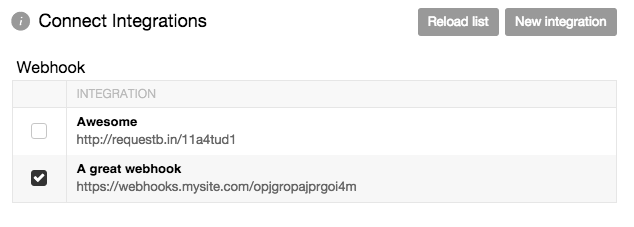


If you need to find this page in the future just select the app from your app management dashboard:.You should now be on the Basic Information page for the newly created App.Unlike traditional systems where one system (subject) keeps polling another system (observer) for some data, Webhooks allow the observer to push data into. The use of webhooks allows web applications to automatically communicate with other web-apps. Pick a workspace to develop your app in: Webhooks allow interaction between web-based applications through the use of custom callbacks.Click the Create New App button, and follow prompts as outlined below.On another tab in the same browser open:.Ensure you are signed into the correct slack workspace.Instructions to create a slack webhook URL:

Sharing it here for the benefit of others, please point out corrections and/or potential improvements. While looking into that I came across the method below as an easier and potentially more versatile option that met the need I had. and when you figure it out please add a step-by-step guide for that to the Ignition forums. Ryver will convert it, and also convert any Slack formatting. I see this in one of the IA example readmes- “Users to be notified need to have an outgoing webhook registered through Slack’s API, then added to their user profile in Ignition.” I’m confused as to where this would be on the Gateway or something, FWIW the project I’m working on integrates with AD but even without that there just isn’t a field anywhere for webhooks when I just look at a blank project … If you create a Slack-formatted webhook, you can provide a Slack Incoming Webhook JSON payload. I am trying to implement Slack notifications for alarms from Ignition on a really large project Slack Notifications - Alarming Module Development


 0 kommentar(er)
0 kommentar(er)
